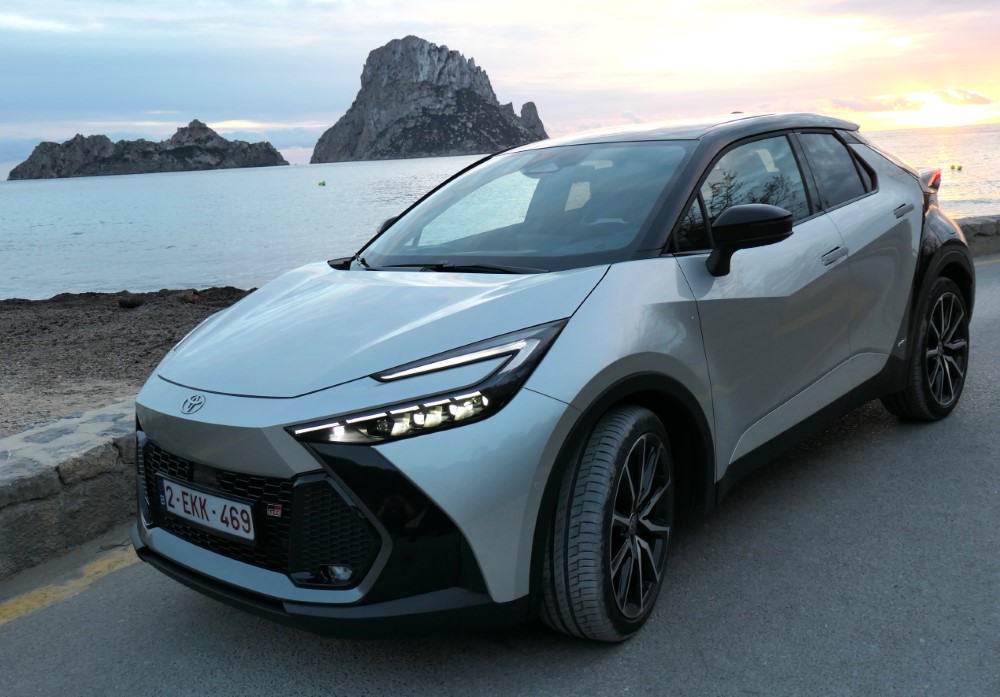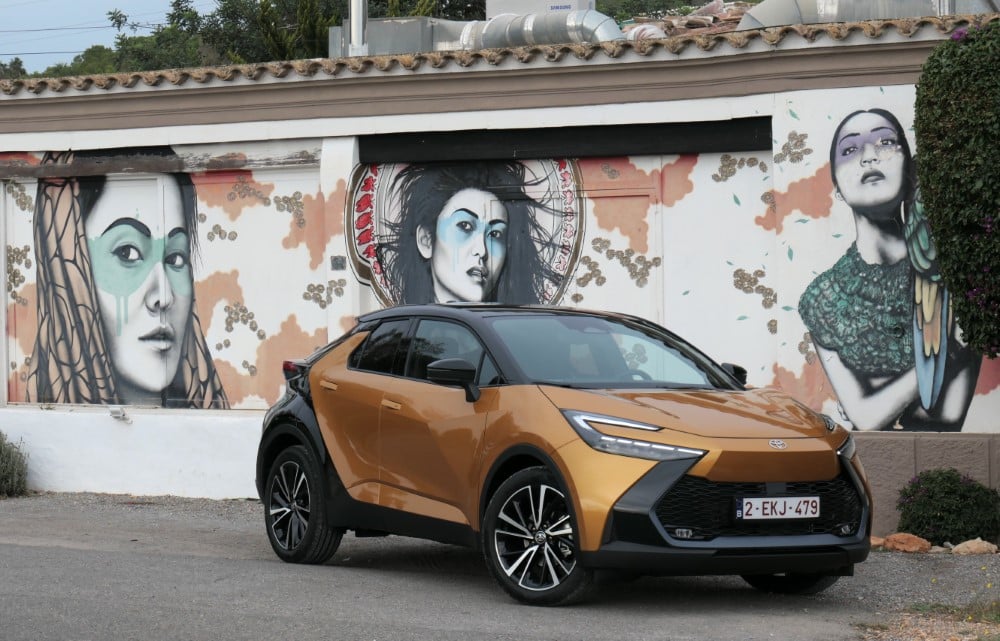There are dozens of fire-engine C-SUVs cruising the narrow roads of Ibiza in November, what’s going on? It’s a gathering of European carmakers at the helm of Toyota’s new hybrid models on an island otherwise quietened by the biles season.
With restaurants and hotels mostly closed, visitors have plenty of time to concentrate on the business at hand: twirling cars straight from the van around Ibiza’s markets and markets. And it pays off: Toyota’s new CH-R hybrids (Coupé High-Rider) shuttle nimbly along mountain roads and through narrow alleys.

The second-generation CH-R is a somewhat paradoxical exterior: the aerodynamic design language – a kind of coupe cross-over – with interior space optimised mainly for two front-seat passengers, makes the model particularly suitable for a bachelor/woman, or a couple with two children (double income, no kids).
However, new cars are mainly bought by a much older crowd.
In Finland, the CH-R is the market leader in the C-SUV segment with a share of almost 19%, followed by the Nissan Qashqai with around 17% and the Kia Niro with just over 11%. In terms of units, the CH-R has a sales volume of around 1,230 this year. The new models coming to Europe will be produced in Turkey.
The Finnish sales target for next year is 1600 new CH-Rs for all models combined, and that’s not exactly a stretch. If the customer can invest a minimum of around EUR 36 000 and a maximum of EUR 52 000 in a new car, the CH-R is value for money.

Of next year’s sales, Toyota expects self-driving hybrids to capture around 75 percent, 10 percent of which will be four-wheel drive, leaving a quarter for the rechargeable hybrid. The company expects the 1.8-litre hybrid to be the best-selling powertrain in Finland.
Currently, in the C-SUV range, self-driving hybrids account for just over 56% of the Finnish car fleet, petrol cars for almost 19% and rechargeable hybrids for just over 16%. Full-electricity models account for 4.3% and diesel models for 2.2%.
The choice of the style-conscious
Toyota says the redesigned CH-R is for style-conscious, digitally-minded and responsible people who want to express themselves through car choice – not just a retirement party. Toyota stresses that, unlike its competitors, all models come with all safety equipment as standard.

The CH-R has a stable and predictable feel, and the steering is suitably responsive; the 2.0-litre front-wheel-drive and 2.0-litre four-wheel-drive models we tried have just the right amount of torque for normal driving on Ibiza’s twisty and narrow roads.
In numerical terms, this means 197 horsepower and 190 newton metres of torque. Acceleration is promised at 7.9 seconds with a top speed of 180 km/h. It has 362 litres of boot space and a towing capacity of 725 kilograms.
In test drives, fuel consumption figures remained reasonable, ranging between 4.8 and 5.5 litres, depending on driving style, and included varying cruising in the city, on the highway and on winding mountain roads.
Despite its looks, the car is not a sporty monster, and you should reserve enough lanes for overtaking, for example; but the 2.0-litre car doesn’t get pushed aside by other traffic.

Cruising at the speed limit, the ride is smooth, with the combustion and electric engines complementing each other smoothly. The car always uses the electric motor at slower speeds, for example when parking, but starts the internal combustion engine immediately at highway speeds.
For extra comfort in bumpy and congested road driving, the adaptive cruise control provides smooth braking when approaching an object in front. The car also reminds the driver to keep his eyes open if he’s going to be behind the wheel.
The windscreen display also reports, with clear numbers and arrows, the in-car navigation system’s instructions, in addition to spoken instructions in English. The navigator is not fully conversant with all the Finnish pronunciations, but the point is made.
For delivery early next year
In the test-driven models, the level of equipment was at its peak. The new Smart Connection package includes a 12.3-inch touchscreen, Apple Carplay and Android Auto, as well as navigation, traffic sign recognition and lane warnings. Everything is promised to run faster than ever, boosted by a 50 percent faster processor.

Everything is at your fingertips in the centre console; you flick the climate controls up and down and feel the temperature change immediately. Next to it you’ll also find the steering wheel and windscreen heater, among other things, and other basic functions.
There’s room for improvement on the benches: the seat could be longer, especially for tall people, or the bench could do with a separate thigh support for cross-country journeys. Some riders complained about the narrowness of the seat, but I would say it’s more a matter of your own buttocks. The seat backrest and lateral support is at least excellent, so that you sit on the seat as if in an eggshell optimised for you.

The 1.8-litre front-wheel-drive petrol hybrid and the 2.0-litre four-wheel-drive and front-wheel-drive rechargeable hybrid are coming to the Finnish market, with a total of 15 different models and equipment levels in a price range of around EUR 36 000 – 52 000. The first hybrid models will be delivered to customers in January 2024 and the rechargeable hybrids in May next year.






